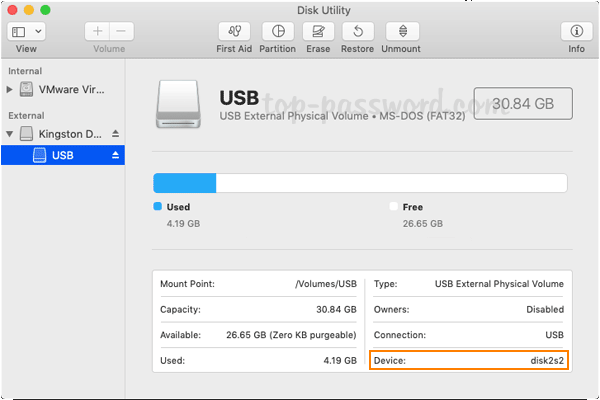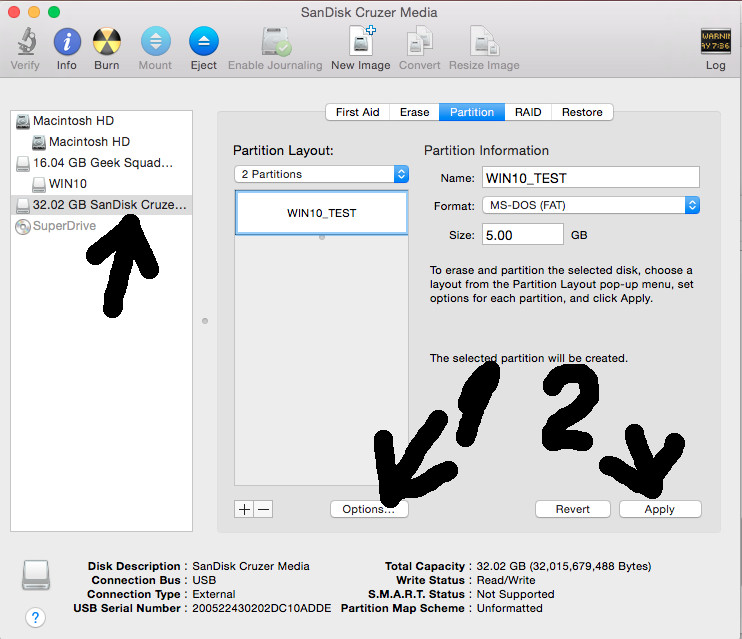

- #Create boot usb for mac how to
- #Create boot usb for mac for mac
- #Create boot usb for mac mac os x
- #Create boot usb for mac mac os
- #Create boot usb for mac install
#Create boot usb for mac how to
Here's how to do it from text commands and using a purpose-built software called WizDMG.
#Create boot usb for mac for mac
To create a bootable macOS installation disk, you have to burn the DMG file to a USB drive as CD/DVD is not available for Mac computers. It can also help in situations where the operating system is corrupted or installation from app store shows errors.
#Create boot usb for mac install
Rather than download and install a new OS from Apple's servers each time, it can be used for multiple installations on different machines. With OWC external drives available for as little as $79.75, it’s inexpensive insurance.Learning how to create a bootable macOS installation disk can be helpful in a variety of situations. It’s a great idea to have a bootable install disk available for those rare emergencies when you might need to re-install your Mac operating system and Recovery Mode isn’t working. Click Continue, then follow the onscreen instructions.

Terminal displays the progress of the erasure. When you’re asked, type Y to confirm that you want to erase your bootable installer volume, then press Return.Note that for security, Terminal doesn’t display characters as you type your password. You’ll be prompted to type your administrator password and press Return again.Once the command has been entered, press Return.NOTE (*): If your Mac is using macOS Sierra or earlier, include the “–applicationpath” argument and installer path, as shown in the command for El Capitan. For my example, I replaced it with Installer.īig Sur:* sudo /Applications/Install\ macOS\ Big\ Sur.app/Contents/Resources/createinstallmedia -volume /Volumes/MyVolume Catalina:* sudo /Applications/Install\ macOS\ Catalina.app/Contents/Resources/createinstallmedia -volume /Volumes/MyVolume Mojave:* sudo /Applications/Install\ macOS\ Mojave.app/Contents/Resources/createinstallmedia -volume /Volumes/MyVolume High Sierra:* sudo /Applications/Install\ macOS\ High\ Sierra.app/Contents/Resources/createinstallmedia -volume /Volumes/MyVolume El Capitan: sudo /Applications/Install\ OS\ X\ El\ Capitan.app/Contents/Resources/createinstallmedia -volume /Volumes/MyVolume -applicationpath /Applications/Install\ OS\ X\ El\ Capitan.app In each command, replace the name MyVolume with the name of your volume. These commands are dependent on the installer being in your Applications folder. At the Terminal prompt, type or copy and paste (easier and more accurate) one of the following commands.Find the Terminal app in the Utilities folder of your Applications folder.
#Create boot usb for mac mac os
For this article, I used a 2TB USB hard disk drive erased and formatted as Mac OS Extended and given the name Installer. Plug in the USB flash drive or formatted volume you’re using for the bootable install disk.When the file is downloaded, double-click it to install an app named “Install OS X El Capitan” into your Applications folder.
#Create boot usb for mac mac os x
The installer has the name “Install macOS ”.įor Mac OS X El Capitan, the link downloads a disk image file named InstallMacOSX.dmg. For macOS Big Sur, macOS Catalina, macOS Mojave or macOS High Sierra, the links download an installer directly into your app folder. To ensure that you’re getting a valid, un-hacked, and legal version of macOS, you need to download it directly from Apple. The macOS Big Sur download page in the Mac App Store


 0 kommentar(er)
0 kommentar(er)
